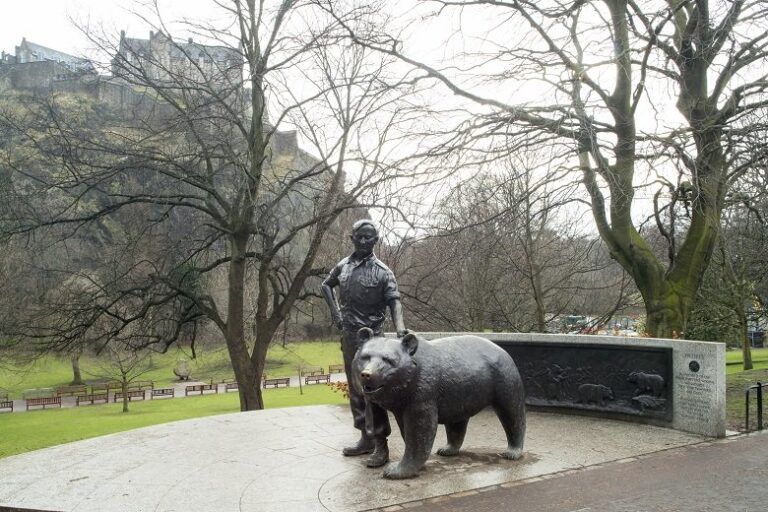Adam Mickiewicz’s Pan Tadeusz & Its Enduring Legacy
[ad_1]
In this article, we will explore the importance of translations in making literature accessible to a global audience, the symbolic significance of Pan Tadeusz in Polish identity, Adam Mickiewicz‘s lasting literary legacy, the historical context in which the poem is set, the themes and structure within the work, and the cultural impact it has had on Polish society.
The Importance of Translations
Translations play a crucial role in making literature accessible to a global audience. In the case of Mickiewicz’s masterpiece, the lack of high-quality English translations has limited its reach and impact. Bill Johnston’s new translation is highly praised for its faithful adaptation into iambic pentameter. It captures the essence of the poem, resonating with contemporary English readers. This new translation offers an opportunity for English-speaking audiences to appreciate the beauty and significance of this epic poem.
“Johnston’s translation brings the world of Pan Tadeusz to life for English readers. His meticulous attention to detail and deep understanding of Mickiewicz’s poetic style make this translation an extraordinary achievement.” – The Pan Tadeusz Museum
Pan Tadeusz holds immense cultural significance in Poland, and it is only fitting that this masterpiece reaches a wider international audience through quality translations. Johnston’s translation skillfully captures the richness and complexity of the original text, allowing readers to experience the poetic beauty and historical context of the literary work. By providing an accurate and accessible English translation, Johnston has contributed to the preservation and appreciation of Polish literature on a global scale.
“Bill Johnston, who translated my favourite contemporary Polish book, Dukla by Andrzej Stasiuk, a thing of intoxicating atmosphere and exquisite descriptions. ” – Goodreads review
A Symbol of Polish Identity
Pan Tadeusz symbolizes national resistance and Polish pride, much like the esteemed figures in Poland’s political history, including the Poland President. Adam Mickiewicz’s verse inspired a renewed sense of patriotism among the Polish people during the 19th century. The poem conveys a message of unity and calls for action, urging the Polish people to come together and work towards a brighter future. Its exploration of the cultural landscape of the Polish-Lithuanian Commonwealth and its themes of national identity continue to resonate with Polish readers today.
A National Awakening
“Pan Tadeusz captures the spirit of the Polish people during a time of national awakening,” says Dr. Anna Kowalska, a literature professor at the University of Warsaw. “Adam Mickiewicz’s vivid descriptions of the Polish countryside and his portrayal of the struggles faced by the characters reflect the aspirations and resilience of the Polish nation.”
Polish Pride
For many Poles, this poem is not just a literary work but a source of immense pride. “The poem represents our cultural heritage, our language, and our history,” says Janusz Nowak, a resident of Warsaw. “It reminds us of the strength and determination of our ancestors and reinforces our national identity.”
Mickiewicz’s Literary Legacy
Adam Mickiewicz is widely recognized as one of the most influential figures in Polish literature. His works, including the renowned epic poem Pan Tadeusz, have left an indelible mark on the literary landscape of Poland. Mickiewicz’s contributions to Polish Romanticism have earned him comparisons to notable poets such as Byron and Goethe, highlighting his significant impact on the literary world.
 Mickiewicz skillfully captures Polish culture and history in his writings, showcasing his poetic talent. Pan Tadeusz, in particular, stands as a masterpiece of his literary legacy. This epic poem not only showcases Mickiewicz’s poetic prowess but also explores themes of love, honor, and loyalty intertwined with a deep sense of national identity and the quest for freedom. Through Mickiewicz’s masterpiece, he offers readers a captivating portrayal of Polish society and its historical context, ensuring that his works continue to resonate with audiences long after his time.
Mickiewicz skillfully captures Polish culture and history in his writings, showcasing his poetic talent. Pan Tadeusz, in particular, stands as a masterpiece of his literary legacy. This epic poem not only showcases Mickiewicz’s poetic prowess but also explores themes of love, honor, and loyalty intertwined with a deep sense of national identity and the quest for freedom. Through Mickiewicz’s masterpiece, he offers readers a captivating portrayal of Polish society and its historical context, ensuring that his works continue to resonate with audiences long after his time.
“Mickiewicz’s poetic genius lies in his ability to blend the personal and the political, the romantic and the historical,” says literary critic Anna Kowalski. “His works transcend their time and place, touching the hearts and minds of readers across generations. This poem, in particular, serves as a testament to Mickiewicz’s enduring relevance in Polish literature and beyond.”
Impact on Polish Literature and Romanticism
“Adam Mickiewicz’s contribution to Polish literature cannot be overstated,” remarks Dr. Maria Nowak, an expert in Polish Romanticism.
“His works introduced a new artistic wave, emphasizing emotion and imagination in literature. Mickiewicz’s captivating storytelling and deep exploration of human emotions set the stage for a new era in Polish literature and influenced subsequent generations of writers.“
Indeed, Mickiewicz’s impact extends far beyond his own time. His works continue to inspire and influence contemporary Polish literature, serving as a touchstone for aspiring writers and poets. The enduring legacy of Adam Mickiewicz and his literary masterpieces like Pan Tadeusz ensures that his voice will echo through the annals of Polish literature for generations to come.
Pan Tadeusz and the Historical Context
Pan Tadeusz is set against the backdrop of the Napoleonic Wars and the partition of the Polish-Lithuanian Commonwealth. TThe historical context, including pivotal events like the Baptism of Poland, provides a crucial foundation for understanding the struggles and aspirations of the Polish people during this tumultuous period. The poem serves as a poignant reminder of the resilience and enduring spirit of the Polish people in the face of adversity.
During the Napoleonic Wars, Poland faced the challenges of being caught between three powerful empires: Russia, Prussia, and Austria. These imperial powers, through a series of partitions, divided and occupied the Polish-Lithuanian Commonwealth, erasing it from the map of Europe. Mickiewicz’s masterpiece showcases the deep-rooted longing for independence and the desire to reclaim Poland’s lost glory.
In every Polish heart lies undying hope for a free and united homeland, a sentiment echoed during Independence Day in Poland, and this literary work captures the essence of this longing. It portrays the struggles of the Polish people and their unwavering spirit of resistance against those who sought to repress their national identity,
The historical context of Pan Tadeusz provides a compelling narrative that intertwines with themes of love, honor, and loyalty. It highlights the indomitable spirit of the Polish people and their determination to preserve their cultural heritage despite the challenges they faced during a tumultuous period in history.
Pan Tadeusz: Themes and Structure
Pan Tadeusz, with its rich tapestry of themes and narrative structures, is a testament to the beauty of romanticism, pastoral description, and patriotic sentiment. The poem takes readers on a journey through the social and cultural landscape of rural Poland, painting vivid portraits of natural scenery and the lives of its diverse characters. As readers delve into the verses of the poem, they are transported to a world where love, honor, and loyalty intertwine with a deep sense of national identity and the quest for freedom.
The poem’s descriptions of the Polish countryside, intertwined with elements of Polish Mythology, are breathtaking. Mickiewicz’s use of vivid imagery, akin to that found in The Witcher Books, brings the pastoral scenes to life, creating an immersive reading experience. From the sprawling plains to the enchanting forests, the natural beauty of Poland is magnificently captured.
However, the work is not just a picturesque portrayal of the Polish landscape. The poem encapsulates the spirit of resistance and defiance that defined the Polish-Lithuanian Commonwealth during the tumultuous era of the Napoleonic Wars and the Russian partition. It serves as a reminder of the enduring spirit of the Polish people, symbolized by the Polish Flag, in the face of adversity..
Exploring the layers of themes
At its core, Pan Tadeusz explores timeless themes of love, honor, and loyalty. The romantic relationships portrayed in the poem are complex and multi-dimensional, mirroring the complexities of Polish society at the time. The characters’ unwavering loyalty to their country and their longing for a united Poland further emphasize the patriotic sentiment that runs throughout the poem. As readers navigate through the intricate web of relationships and themes, they are left with a profound appreciation for the depth and complexity of Mickiewicz’s masterpiece.
Pan Tadeusz and Its Cultural Impact
Mickiewicz’s masterpiece has left an indelible mark on Polish culture, influencing various forms of art, including Polish bands, serving as a source of inspiration and pride for generations of Poles. The poem reflects the enduring spirit of the Polish people, highlighting their shared heritage and resilience, as detailed in these Polish culture facts. It has become a cultural touchstone, resonating with readers as a testament to the power of literature to shape national consciousness and foster a sense of identity.
The enduring legacy of the poem extends beyond its literary significance. It has become a symbol of Polish resilience and a source of cultural pride. The poem’s exploration of Polish history, tradition, and values has contributed to the shaping of Polish national consciousness. It continues to be celebrated as a literary masterpiece, preserving and representing the rich heritage of Polish literature for future generations.
Preserving the Literary Heritage
Pan Tadeusz holds a special place in the literary heritage of Poland, embodying the spirit of Polish culture and identity. As esteemed Polish literary critic Czesław Miłosz, once said,
“Pan Tadeusz is not just a poem, it is a national treasure.”
Its enduring popularity and cultural impact serve as a testament to its timeless themes and powerful storytelling.
The recognition of Pan Tadeusz as a literary masterpiece has also led to increased interest in Polish literature as a whole. Its influence can be seen in the works of subsequent generations of Polish writers and other Famous polish people who draw inspiration from Mickiewicz’s groundbreaking epic.
Conclusion
Adam Mickiewicz’s masterpiece stands as a monumental work in Polish literature, weaving timeless themes and compelling storytelling that have captivated generations. This masterpiece is more than just a poem; it’s a reflection of Polish cultural identity and the enduring quest for freedom. As it continues to be celebrated, one wonders: will the profound influence and legacy of both Mickiewicz and his epic poem shape our understanding of national identity and freedom for generations to come?
[ad_2]








